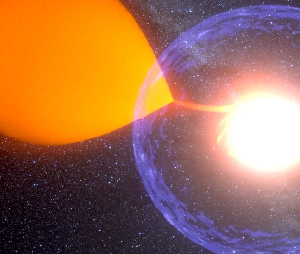Beryllium is a chemical element in the periodic table of the elements, used mainly as a reinforcing agent in alloys (copper-beryllium), carcinogenic to humans. Beryllium-7, resulting from the fusion of helium 3 and helium 4, is important in nuclear physics. It is an unstable isotope which, with the capture of an electron and the emission of a neutrino, transforms into lithium 7 with a half-life of 53.2 days.
Lithium 7 is a primordial isotope, produced during the Big Bang. It is used as a constituent of lithium fluoride for molten salt nuclear reactors.
The researchers, therefore, believe that Novae can be regarded as a real Lithium factory present in the Milky Way, solving a problem that had puzzled astronomers for decades.
Novae occur when hydrogen accumulates on the surface of a white dwarf which causes a huge nuclear explosion, causing the star to become much brighter than usual. Hydrogen comes from a companion star of the white dwarf, which is compressed and heated by gravity and triggers the thermonuclear reactions which blow off the outer layers of the white dwarf, producing the phenomenon of the “Nova”, with a brightness up to 100,000 times higher than its normal values.
To look for signs of the presence of Beryllium-7 in the material expelled by the expanding star, the researchers used the UVES spectrograph installed on ESO’s Very Large Telescope. “With a series of observations between 57 and 82 days after the maximum of the Nova – explained Massimo Della Valle, Director of INAF- Astronomical Observatory of Capodimonte, who participated in the study – it was possible for the first time to follow the evolution of the absorption in correspondence to the Beryllium-7 transition and find the “signature” of the isotope. Moreover, it was also possible to calculate precisely the Beryllium abundance. And the Beryllium-7 abundance was really huge”.

For more information about this study, visit:
http://www.inaf.it/en/inaf-news/novae-the-beryllium-and-lithium-factory
